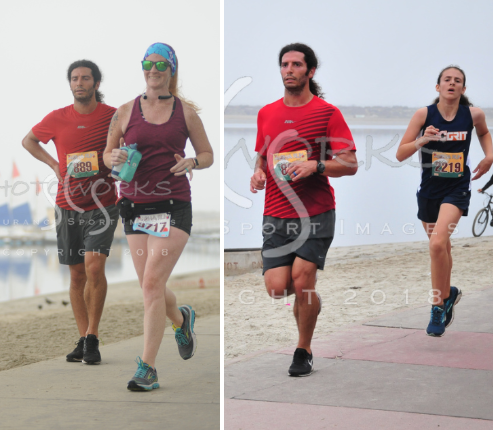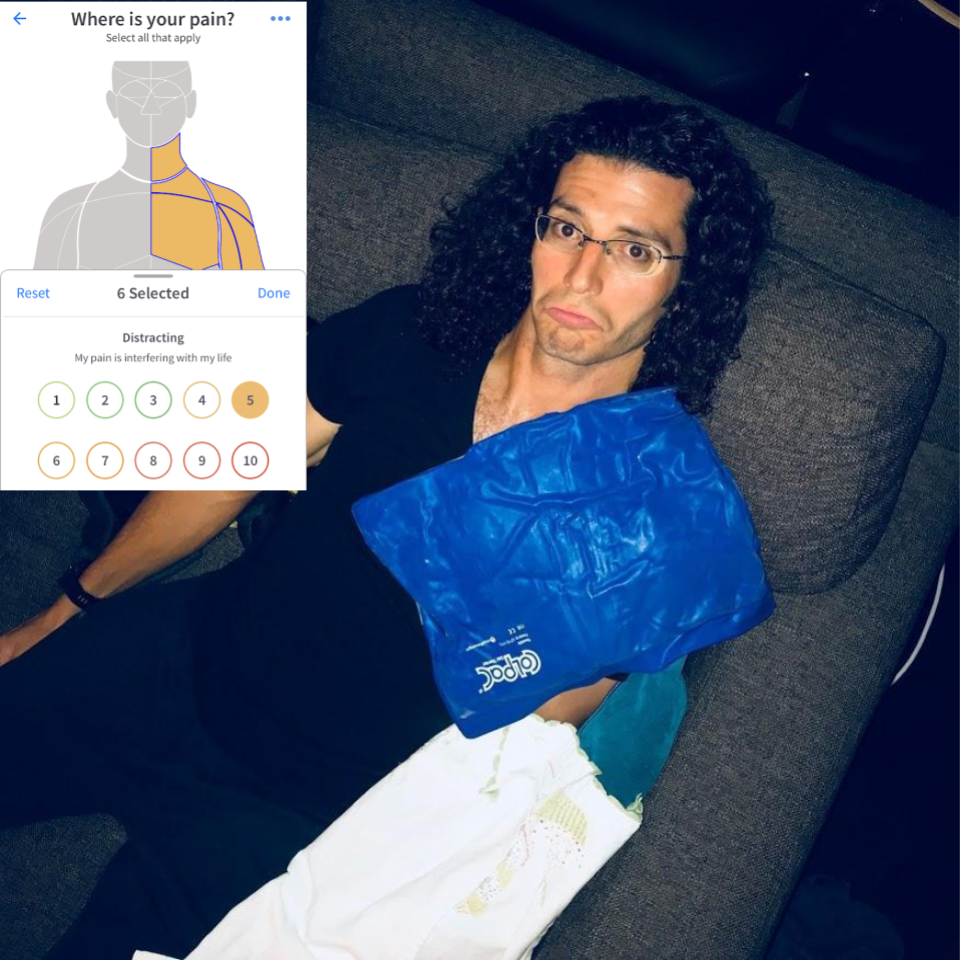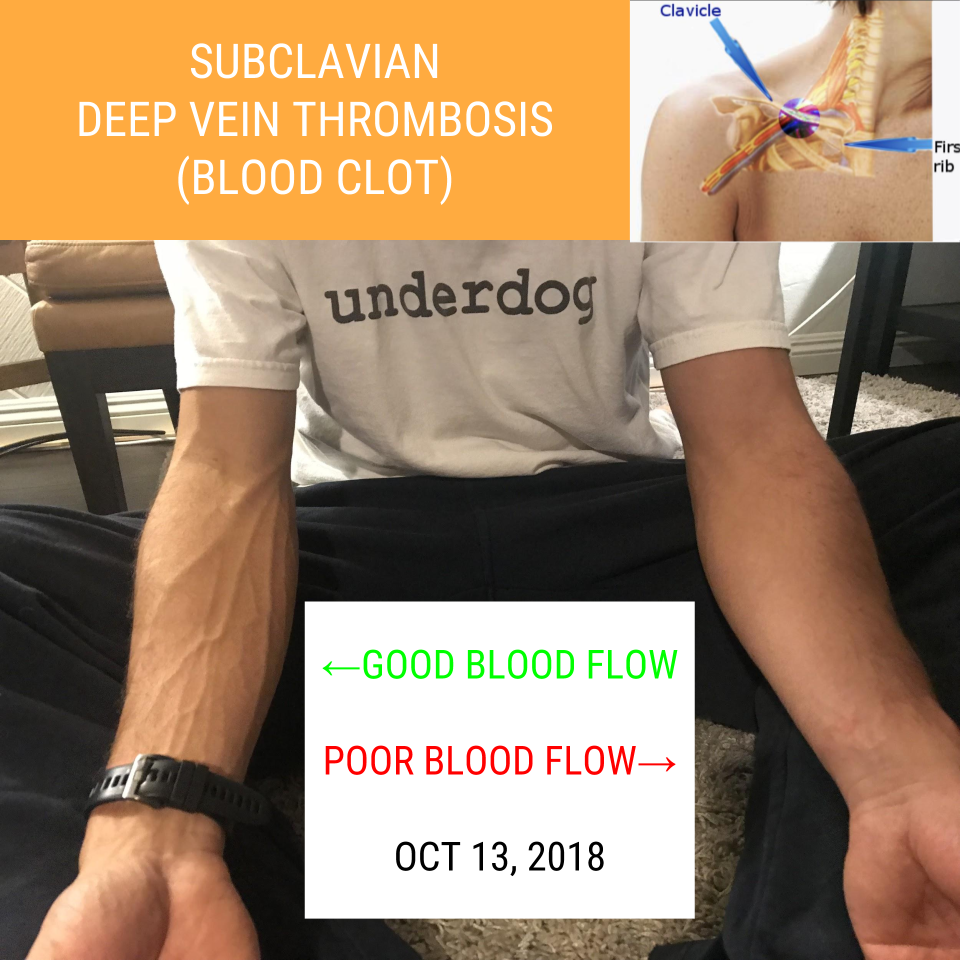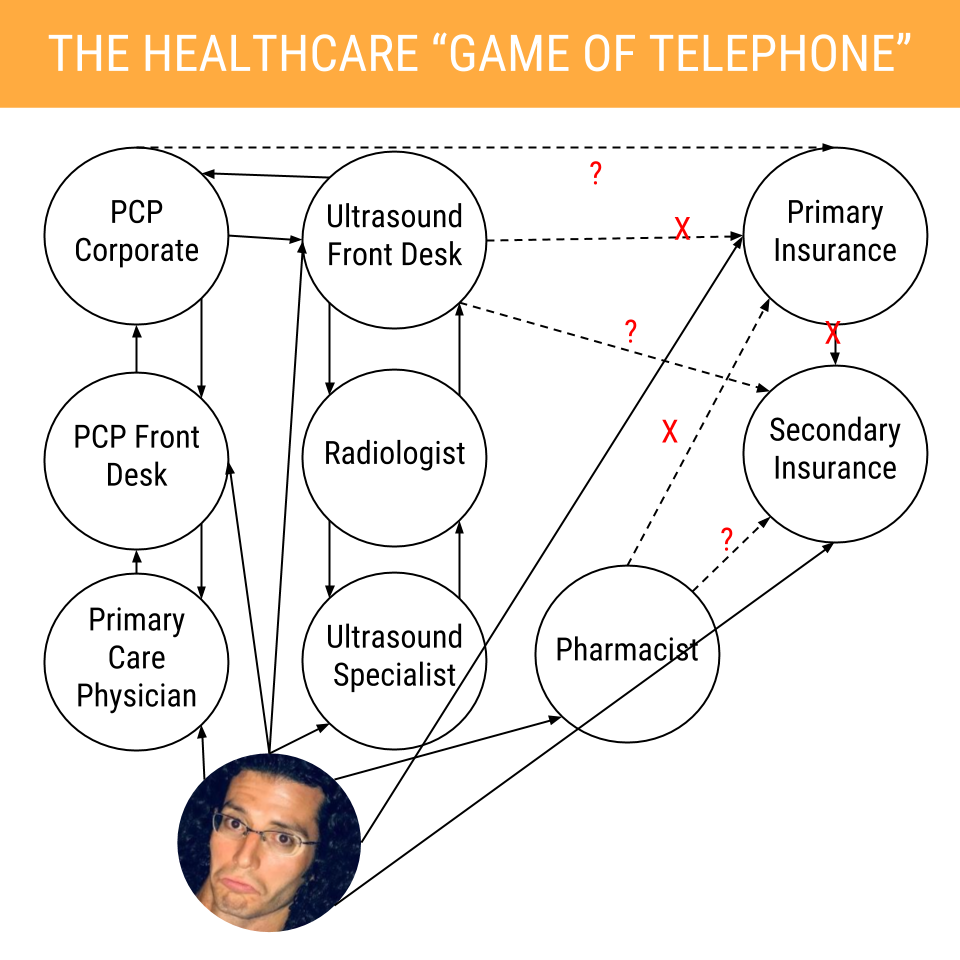DISCLAIMER: Blood clots are scary. They are RARE for young athletes, but they can happen to ANYONE, and they become increasingly likely as you age (60+). I recently suffered a blood clot at age 33. I was diagnosed and treated by the U.S. healthcare system, which a frustrating and time-consuming experience.
I hope you never experience a blood clot, but if you do, hopefully this post helps you understand, manage, and minimize the negative effects.
This post has 5 sections: (1) Blood clots, (2) My 5K Race on Sept 9th, (3) After The Race, (4) My Diagnosis and Treatment from the U.S. Healthcare System, and (5) Lessons Learned.
I've been fortunate to be relatively healthy in my life, and I imagine others may have even more severe stories. Do you have a "United States healthcare story" to share? If so, you can share by filling out the form at Economics Athletes: My Healthcare Story, or reach out to us at hello@econathletes.com.
1. Blood Clots
A blood clot is a clump of blood that has changed from liquid to a gel-like or semisolid state. Clotting is a natural process to stop bleeding when you get injured or cut. Clots typically dissolve on their own after you stop bleeding, and everything is back to normal. However, if a clot doesn't dissolve on its own, it can be very dangerous and even life-threatening.
Deep vein thrombosis (DVT) is when a blood clot forms in a vein deep inside your body. These are serious because they prevent blood from circulating normally and can cut off large parts of your body. If the clot becomes dislodged and travels to your heart, lungs, or brain, the consequences are potentially fatal.
Elite athletes who have had serious clots include Serena Williams (tennis), Chris Bosh (basketball), and Kris Letang (hockey).
Causes and risk factors include (1) broken bones, (2) pulled muscles, (3) sitting for extended periods of time, (4) being overweight, and (5) being over 60. See WebMD and Healthline.
The Centers for Disease Control and Prevention (CDC) estimates that DVT, together with pulmonary embolism (a clot affecting the lungs) affects up to 900,000 Americans and kills approximately 100,000 Americans annually.
2. My 5K Race on Sept 9th
I sustained a blood clot around September 9th (probably a little earlier). The scariest part is that the clot wasn’t officially diagnosed until October 12th (33 days later).
Leading up to the race, I wasn't my best prepared.
I didn’t taper properly (pretty hard workouts Sept 4th, 5th, and Sept 7th).
I felt more stressed and tired than usual before races.
My shoulders and neck felt too tight
I was aiming for a PR, aiming to beat 20:47 from July 4, 2018
I likely had a small blood clot going into the race, and turned it into a big one during and after the race.

During the race
I felt ok at the start, went out in 6:26 first mile
But...my heart rate (from the Garmin watch on my left wrist) did not increase to 180 bpm like it should have. Instead, my recorded heart rate only stayed at 140 bpm, which is very odd. I did NOT notice this during the race, but it was a sign something was not right. See charts below. Lesson #1: Know what your heart rate is supposed to be. If it's way off from your target, that is a warning sign to take seriously.
Halfway through the race (10 mins in) I felt weakness and dullness down left side of body, esp. in left shoulder and left hip. There was intense pain down the entire left side of my body, head to toe. The pain was concentrated in my left shoulder, lat, and hip.
I had to stop and walk.
I toughed it out and walked / ran the second half of the race. In hindsight, I could have recognized it was a blood clot. The smart thing would have been to STOP running immediately. I could have left the race with a minor clot instead of a major one, and maybe just 3-4 weeks off (guessing). Instead, I cost myself at least 7 weeks off (and counting).
Lesson #2: If you ever experience something you've never felt before, take it seriously and stop whatever you're doing before it gets worse.


This is a tough one. As a competitive athlete, my instinct is always to fight through the pain. But sometimes, that’s not the right thing to do. That's the constant struggle, knowing when to push through the pain and when to listen to your body, pull back, and save yourself from more damage.
3. After the Race
My friends and I finished the race, and we were all proud, so that's worth celebrating!

After the race, there was some pain and swelling in my left arm. It seemed to me like a bad muscle strain. I didn't know anything about blood clots, so I treated it like a muscle strain, iced, and it started to feel better.

I saw two top physical therapists who treat runners and described what I experienced. They both recognized this was potentially serious and recommended I see my MD.
I tried to book an appointment with my MD, and the earliest I could get on his schedule was over 2 weeks away! At the time, I didn't realize the severity of my injury, so I just waited. I figured: my MD is pretty busy, I'm pretty busy, we have a shortage of doctors in the U.S., so I won't take up his valuable time.
The pain went away, and I slowly returned to running.
One odd symptom remained, however: blood didn't seem to be getting all the way through to my left arm...

4. My Diagnosis and Treatment from the U.S. Healthcare System
October 3, 2018. I saw my primary care MD (over two weeks after I scheduled the appointment). He suspected a possible blood clot, so we scheduled an Ultrasound and X-Ray as soon as possible.
October 10, 2018. My ultrasound appointment was scheduled for as soon as possible = one week away.
What ensured starting October 3 seemed like a convoluted and nightmarish version of the children's game called "Game of Telephone" aka "Chinese Whispers." Do you remember that game? It's where players form a line, the first person comes up with a message and whispers it into the second player's ear, and so on down the line, until it gets to the end. Then the last player shouts the message out loud. The message usually is different from the original, which is funny in the game. However, in real life when a person's health is at stake, it is not amusing.

For a full account of the 35 steps over 3 weeks that it took to receive a diagnosis and treatment, check out: "My Blood Clot Diagnosis and Treatment from the U.S. Healthcare System."
The short story is:
I received an ultrasound test on October 10, which showed I had a subclavian DVT (blood clot).
My primary care physician found out on October 12, and immediately started me on anticoagulants, aka "blood thinners."
I paid $200 for the ultrasound, and I may be billed for the X-ray after the fact, both of which were supposed to be covered by insurance, because we had difficulty communicating with my insurance companies.
I paid $0 for seven weeks of anticoagulant pills, which normally cost around $1,344.99, thanks to luck and being in the right place at the right time.
I am now on the path to recovery, and I have resumed normal life as of October 23, still on anticoagulants through at least the first week of December.
I will have another ultrasound test the first week of December to see if the clot is fully dissolved.
5. Lessons Learned
Lesson #1: Know what your heart rate is supposed to be and monitor it when you can. If it's way off from your target, that is a warning sign to take seriously.
Lesson #2: If you ever experience something you've never felt before, take it seriously and stop whatever you're doing before it gets worse.
Lesson #3: The U.S. healthcare system is frustrating. Expect to spend a lot of time and energy dealing with it.
Want to help improve our healthcare system?
First, this is a big issue with many stakeholders who may have diverse needs and opinions that need to be valued. Second, whatever we do, we should not to expect to see improvements overnight. I encourage you to be persistent, yet also patient. Third, by sharing information and opinions in a constructive way, I think we will start to see more data and improvements over the long-term.
Here are three things you can do now that may make a positive difference.
Visit https://allofus.nih.gov/ and join the "All of Us" research program.
If you have a story to share, please fill out the Economics Athletes: My Healthcare Story survey.
Share this blog post with others and help spread the word. Without awareness, we have no hope of real change.
Until next time,
~Mickey










Comments